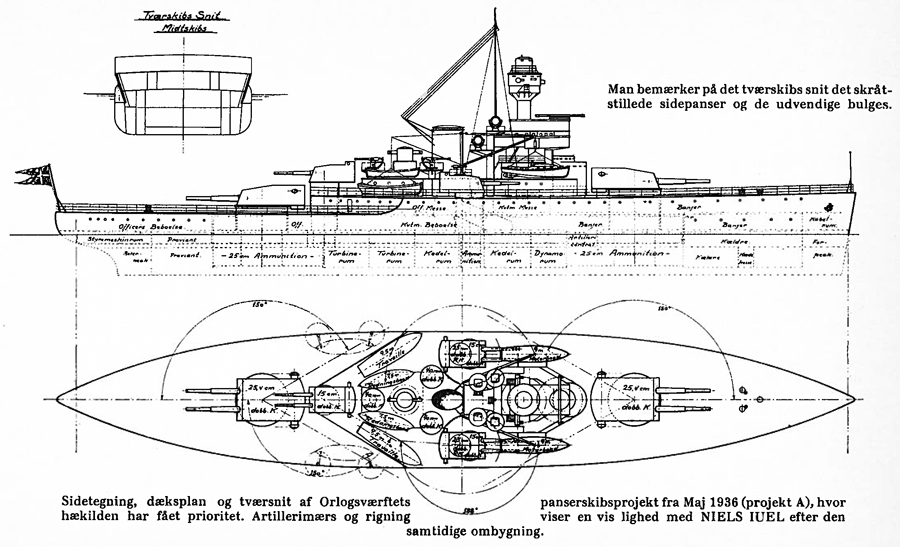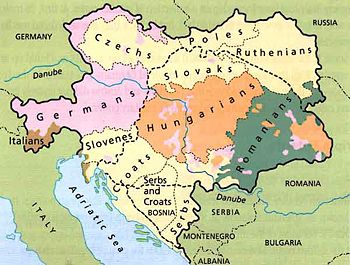Another retro post but this ought to be the last..
January 1941/ November 1864
Min of Defence Christmas Møller shortly following New Year presented his plans for Army and Navy procurement in this and coming years:
New automatic weapons for Danish Armed forces – Madsen Machinegun M/37 beltfed firing 1000 rpm in AA-mount used on Truck mounts being a development of the tripod M/29 450 rpm and bipod M/24 400 rpm should be worked upon to make it the replacement of the M/29 and M/24 of the Army and Marines.
It would be rather tedious but make for a possibly lighter and with a higher rate of fire
Infantry support weapon. Still using the 8x58mmR Danish Krag cartridge to use the large stocks of rifle ammunition.
Madsen 20mm Cannon M/31 250 rpm planned being upgraded to 350 rpm by 1939 and 500 rpm in the M/40 as well as projected Army Airtroops model M/40 550 rpm for the new Fokker G-1 and Navy P4/34 Patrol torpedobomber to go into production.
Continued production of the Suomi Kp/31 or P1 that was being phased in by 1940. Madsen/DISA would continue evolving the weapon that had been decided to become the standard sub-machinegun of Armed forces – Marines to be included.
Since 1888 Madsen had experimented in semi-automatic Rifles but the success of the Machingun had overshadowed that part – the Danish Army being in need of a new Rifle to replace the M/1898 Krag-Jørgensen which were worn out.
Army gunsmith Søren Hansen Bang FKA (Forsøgs- og Kontrol Afdelingen/Test and Control Department) had by 1909 build a repeating rifle which he had submitted to the US Army for testing. The weapon had been promising but lacking in a few areas.
Søren Hansen Bang's Rifle submitted to the US Army M1911 was reworked for testing by the Danish Army as was the Madsen Light Rifle (M47). The latter still a bolt-action rifle but easier to produce and maintain in the field.
The Slesvig War had made it important to re-equip the Army and Navy with a new Infantry Rifle. Madsen factory thus presented a prototype light Rifle that could be produced as both bolt-action or semi-automatic. Simplification being the catch no tools needed to disassemble the rifles and ease the task by night.
Still the rifle should be procured in 8x58mmR Danish Krag relating to the previously mentioned use of existing stock of ammunition.
Then at a suitable time the change of cartridge would be considered – as Madsen were able to work in a number of different cartridges and calibers such would be no serious problem as the rifles then replaced could be kept in stores for mobilization or sold off.
Another Army Engineer and Gunsmith Captain of Reserves Erik Sætter-Lassen had supplied his own design to the replacement for the Madsen M/24/29 LMG/MMG. The gun looking like the Swiss Solothurn M30.
The design was interesting but the Ministry had decided to advocate the M/37 as it was already in production and with few changes to the existing design - adding a bipod – would be all required for Infantry use. Also the design was well proven and known to the Army.
Gas! Though horryfying because of the use during the Great War every Danish trooper had a gasmask and many had been produced to protect the civil population – the Army proposed a production of emergency stocks for last ditch defences; following much debate Government gave the green light and the Social Liberals were horrified as the decision was revealed to Parliament.
Parliament had authorized the Navy Works to restart Aircraft engine manufacture to keep what was at hand flying and to develop new aircraft.
The Army Fokker G-1 and Navy Fairey P4/34 being the blueprints regarding engines and such modernities as retracting undercarriage but also to be able to service the DDL airfleet; the FW Condor which would need spares and was of like modern design.
The Junkers Ju52/3m was more the link from the Fokker airliners to the FW Condor and easier to maintain with existing means. The Navy Works would offer some of its designs to DDL.
These would comprise the following Aircraft engines:
Radials copy Bristol Mercury VIII (825 hp) and VI (605 hp) – Army, Navy, DDL users.
Bristol Jupiter VII (440 hp) – Army, DDL users.
Inline copy RR Merlin I V12 (1030 hp) – Navy use possibly Army and DDL at some future date.
Rebuild OV-1 with one block cylinders (160 – 260 hp) – Army and Navy, commercial use.
Stripped down aircraft models with fixed undercarriage like the Fokker D-XXI and even biplanes had been proposed for production but even Kramme and Zeuten KZ light Aircraft producers had abandoned that route and was only building monoplanes though oft with tubeframing clad in fabric.
Kramme & Zeuthen building small private prop aircraft had been contracted along Thrige Works to build light 4 cylinder engines for aircraft use in lighter aircraft than standard designs of Army or Navy use for eventual use in overseas areas but also to fit out replacement engines for the crew trainers DH 90 and the DH Moth as well as the new trainer to be delivered by Kramme & Zeuthen – KZ IIT.
The Navy Works was detailled to set up the engine division as a semi-commercial venture as truck and car engines would soon be lacking. The OV-1 160 hp 6-inline would be the initial engine to be updated and refined. And development of a gearbox to add.
Thrige Truck and Engine manufacturer and Frichs of Randers producing large train engines were asked to join a development and procurement group headed by the Navy Works engine division.
The Ellehammer aircraft engines had been rejected as they were too demanding in redesign to make satisfactory – however they could see a use for car propulsion mainly so the 2-stroke 3 cylinder radial which had an output of 115 hp.
The Navy Works would continue working on this which could perhaps be used with the Tempo Cars in use with Artillery and Cavalry units which would be a fine Infantrygun tractor as it was a cross-country vehicle. The Tempo Car was about to be put into production as its simple layout would make it ideal to less developed areas such as the West Indies.
Another vehicle of the Army was Armoured Cars. Since 1917 tests had been carried out involving a French FT17 tank, British tracked armoured vehicles, locally converted trucks and finally three different Landsverk Armoured Cars the 185, 180 and Lynx models.
The Lynx had been decided on by the Army for procurement to outfit the Cavalry Regiments. Two had been in Jutland during the Slesvig Campaign though one broke down during the Campaign the performance of the vehicles were so satisfactory mostly in the context of the 1864 opponents that this would be the vehicle to continue use in the Army Cavalry Regiments. The Navy Works had made arrangements with the Ford Factory staff among others for taking one of the three operational Lynx Armoured Cars apart for copying and start a production – initially of 12 vehicles as originally agreed upon by Government but also due to the versatility of the Vehicle it could be used outside the Kingdom.
As not all areas outside the Kingdom and also in European context this would be the case in some areas the Army and Marines also wanted a light tracked vehicle for such operational areas.
The Army already had the well proven Kornbech-Kegresse tracksystem to fit to Army Trucks for moving heavy artillery; the system worked well except in steering which required quite some experience to do. A rework of the system was wanted and as field tests had been carried out with German manufacture Half-Tracks during 1939 of Sd.Kfz. 10 and 11 had proven very promising some tricks might be gotten from the various specifications the German manufactures had been supplying as part of the testing. These specifications had already been handed to Thrige Works in duplo to be scrutinized.
Also Thrige had been supplied the stored Carden-Lloyd tracked Patrol Cars Mk.VI for building an improved model for evaluation. This would be a longer term development.
The Navy also were tasked with cooperating along Valdemar Poulsen and B&O for radio production; the Slesvig Campaign had shown the value of radio in every individual Aircraft as already having been planned but not fully executed in order to maximize the role of the Aircraft in combat against ground troops as well as Navy operations – Artillery spotting being highly beneficient of this. The Army was also to have all its Aircraft outfitted with radio.
Navy building programme:
Peder Skram earlier Aircraft carrying platform refitting and extended to Niels Juel.
Peder Skram reserveguns - 24cm Bofors L43/ M06 x3 in store of which one had been sent to Sweden as a template for required builds for both Danish and Swedish-Norwegian Navies.
The two large projected Torpedoboats were scrapped for use of resources in other more needed units.
The Glenten and Dragen class' of Torpedoboats get each a Torpedo apparatus exchanged for another main gun 87mm in Glenten 75mm in Dragen class – eventually to be upgraded to 87mm for ease of logistics.
Some minesweepers building or projected cancelled others rebuild with more artillery as patrol vessels.
Cruiser Project PG225 of 1936 dusted off – revised with two dualturrets of 155mm Guns, an Aircraft Catapult and only a double Torpedoapparatus. Endurance, speed and versatility prioritized at the expense of Guns and Torpedoes.
Three or more units to be build. The 1936 layout had been more or less adapted in the redesign of Niels Juel Artillery during its build.
The overseas commitments in the West Indies had made this urgent and the three units the lowest possible number – at least five wanted, preferable six as these would also be of use in a European theatre due to extended range and versatility.
Armoured ship project A was prioritized to replace both Peder Skram and Niels Juel; with an added third unit to be the defence of home waters.
An Aircraft project of building at least 30 floatplanes convertible to landplanes. Steel tubing frames with plywood surfaces.
New Transport/Landing Boats for Army cooperation operations.









 Don't mind Bosnia
Don't mind Bosnia